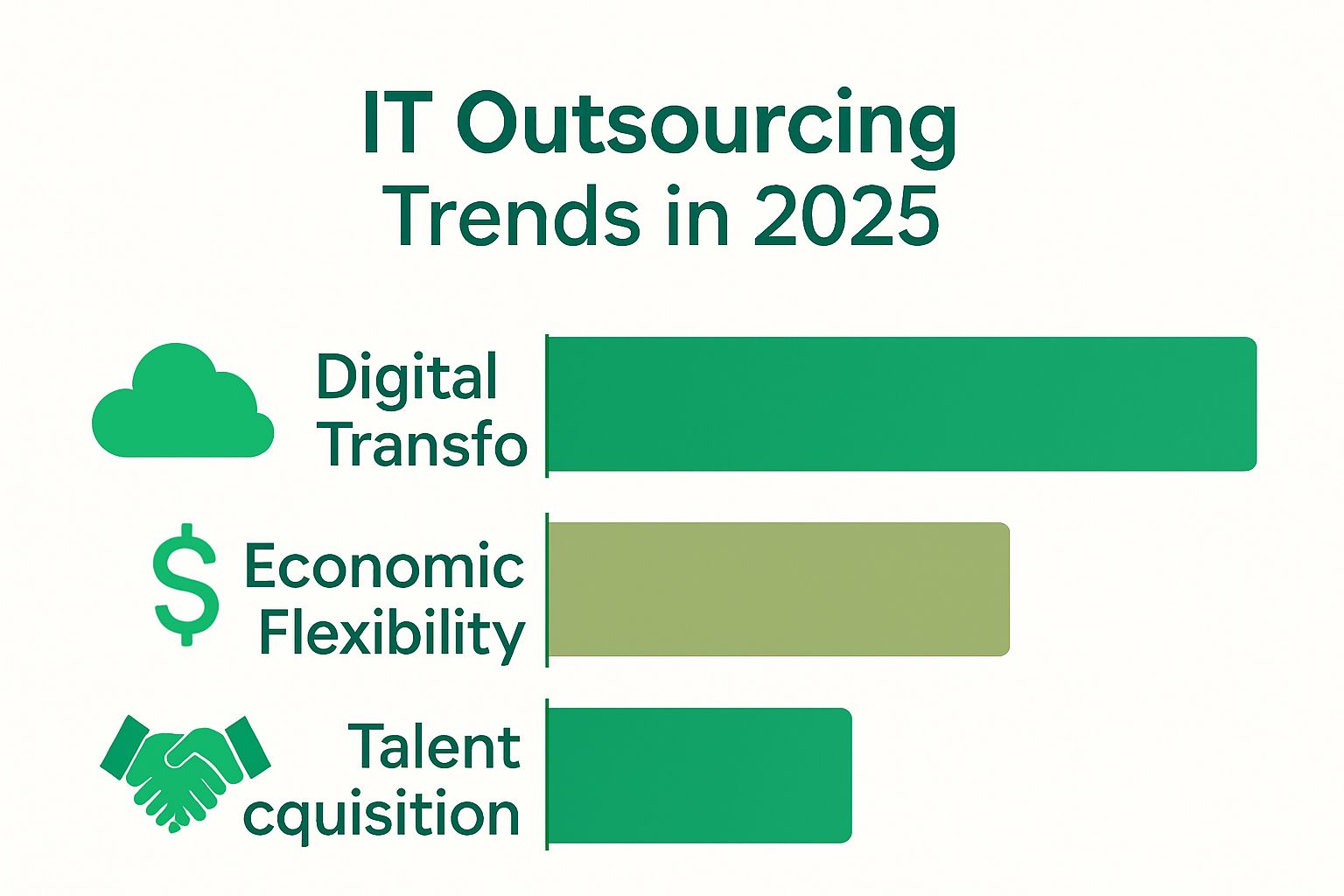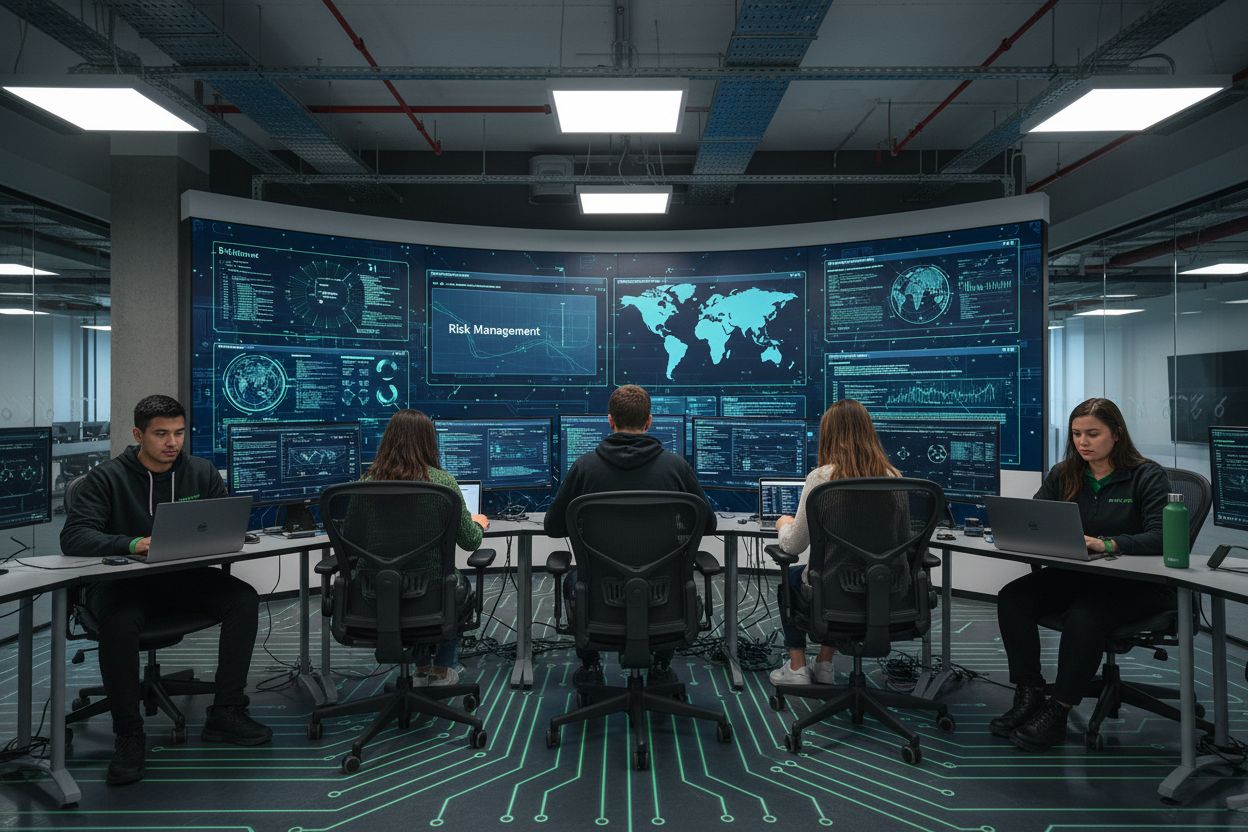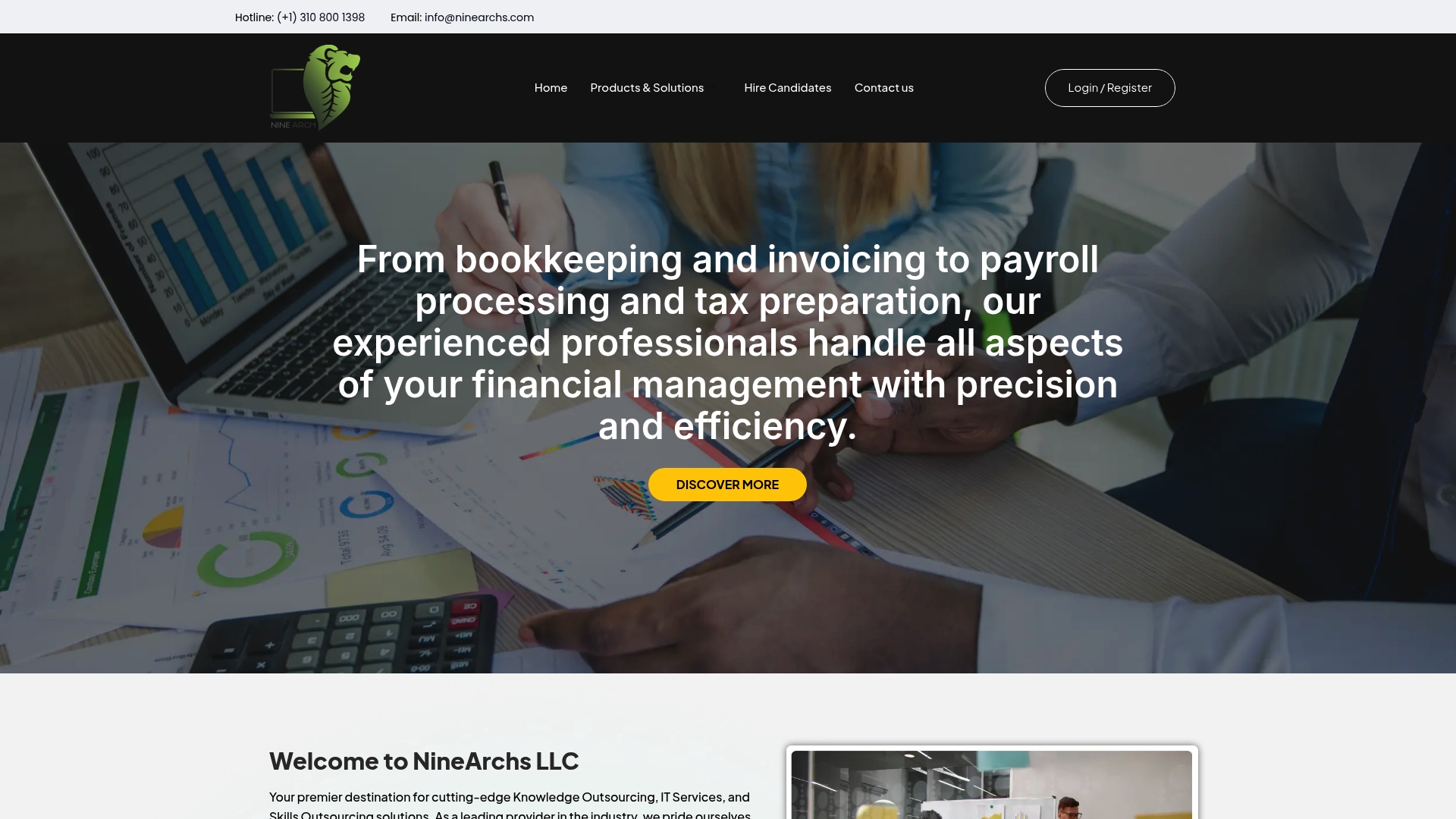IT outsourcing has morphed from a back-office support trick to a global powerhouse that now reshapes how companies grow and compete. Think about this. Over 59 percent of companies worldwide now rely on IT outsourcing as a core business strategy. You might expect this is all about saving money or cutting corners but the real story is how outsourcing has become the engine for innovation, agility, and grabbing top-tier talent before the competition even knows what hit them.
Quick Summary
| Takeaway | Explanation |
|---|---|
| IT outsourcing has evolved into a strategic imperative. | Historically viewed as cost-saving, outsourcing now emphasizes competitive advantages and access to specialized skills. |
| Emerging technologies drive modern outsourcing practices. | Businesses leverage AI, cloud computing, and automation to enhance efficiencies and adapt to changing landscapes. |
| Cybersecurity is paramount in outsourcing partnerships. | Organizations must implement rigorous security measures and vendor assessments to mitigate risks associated with data protection. |
| Economic flexibility necessitates adaptive workforce models. | Companies are adopting scalable solutions to manage costs and maintain operational agility amid economic uncertainties. |
| Cultural shifts are essential for effective remote work. | Successful management of remote teams requires a focus on trust, communication, and performance-based evaluations. |
The Evolution of IT Outsourcing: A Historical Perspective
IT outsourcing has transformed dramatically from a niche strategy to a global business imperative. Understanding its historical trajectory illuminates how technological advancements and economic shifts have reshaped external technology resource management.
The Early Days of Technology Partnerships
In the 1960s and 1970s, early IT outsourcing emerged primarily through mainframe computing services. Companies like IBM pioneered the concept of providing computing infrastructure to organizations unable to maintain expensive hardware internally. These initial partnerships focused on computational power and data processing capabilities.
Key characteristics of early outsourcing included:
- Limited technological complexity
- Centralized service delivery
- High infrastructure investment requirements
- Predominantly large enterprise engagement
Strategic Global Transformation
By the 1990s, IT outsourcing transitioned from a technological solution to a strategic business approach. Gartner Research suggests this period marked a significant shift where companies began viewing external IT resources as potential competitive advantages rather than mere cost-reduction mechanisms.
The globalization of technology services enabled businesses to access specialized talent pools worldwide. Countries like India and the Philippines emerged as significant technology service providers, offering skilled workforce solutions at competitive rates. This global talent marketplace fundamentally redefined how organizations approached technology resource allocation.
Modern Outsourcing Paradigms
Contemporary IT outsourcing has evolved into a sophisticated ecosystem integrating cloud computing, artificial intelligence, and distributed workforce models. McKinsey Global Institute indicates that modern outsourcing transcends traditional boundaries, emphasizing collaborative, agile, and technology-driven partnerships.
Today’s outsourcing strategies prioritize:
- Specialized expertise integration
- Flexible engagement models
- Advanced technological capabilities
- Risk management and cybersecurity considerations
The journey of IT outsourcing reflects broader technological and economic transformations, demonstrating remarkable adaptability in meeting evolving business needs.
The table below compares the three major eras in the evolution of IT outsourcing, highlighting key characteristics and shifts over time.
| Era | Time Period | Key Characteristics | Impact on Business |
|---|---|---|---|
| Early Technology Partnerships | 1960s-1970s | Centralized delivery, limited complexity, large investments | Access to computing power |
| Strategic Global Transformation | 1990s | Global talent pools, cost savings, strategic value | Competitive differentiation |
| Modern Outsourcing Paradigms | 2000s-Present | Agile models, cloud/AI integration, focus on capabilities | Innovation and flexibility |
Key Drivers Shaping IT Outsourcing Trends in 2025
The landscape of IT outsourcing continues to evolve rapidly, driven by technological innovations, economic dynamics, and changing business strategies. Understanding these key drivers provides critical insights into how organizations will approach external technology partnerships in the coming years.
Technological Acceleration and Digital Transformation
Digital transformation remains a primary catalyst for IT outsourcing strategies. Deloitte Technology Trends Report highlights that businesses are increasingly seeking external partnerships to accelerate technological adoption and access specialized expertise.
Key technological drivers include:
- Artificial intelligence and machine learning integration
- Advanced cybersecurity solutions
- Cloud computing and edge technologies
- Automation and intelligent process redesign
Economic Flexibility and Cost Optimization
Economic uncertainty continues to push organizations towards more flexible workforce models. PwC Global Economic Outlook suggests that companies are strategically using IT outsourcing to manage operational costs, reduce financial risks, and maintain competitive agility.
Businesses are particularly focusing on:
- Scalable workforce solutions
- Reduced infrastructure investments
- Access to global talent pools
- Predictable technology expenditure models
Strategic Talent and Capability Acquisition
Modern IT outsourcing transcends traditional cost-reduction models, emerging as a strategic approach to acquiring specialized capabilities. Organizations recognize that external partnerships provide access to cutting-edge skills and innovative technological approaches. McKinsey Global Technology Report indicates that companies view outsourcing as a mechanism for rapid skill acquisition and technological innovation.
Learn more about how NineArchs supports strategic IT outsourcing solutions for businesses seeking comprehensive technological partnerships. These evolving drivers demonstrate that IT outsourcing is no longer just a tactical decision but a sophisticated strategic approach to technological growth and organizational transformation.

Emerging Technologies and Their Impact on Outsourcing
Technological innovations are fundamentally reshaping the landscape of IT outsourcing, creating unprecedented opportunities for organizations to leverage advanced capabilities and transform traditional business models.
Artificial Intelligence and Intelligent Automation
Gartner Technology Research reveals that artificial intelligence is driving profound changes in outsourcing strategies. AI technologies enable more sophisticated, intelligent automation processes that significantly enhance operational efficiency and decision-making capabilities.
Key AI-driven transformation areas include:
- Predictive analytics and intelligent forecasting
- Automated process optimization
- Enhanced cybersecurity threat detection
- Intelligent customer interaction systems
Cloud Computing and Distributed Infrastructure
Cloud technologies have revolutionized outsourcing by enabling seamless, scalable, and flexible technological infrastructure. AWS Cloud Computing Report demonstrates that organizations are increasingly adopting distributed cloud models to create more agile and responsive technological ecosystems.
Cloud technology enables:
- Global workforce collaboration
- Reduced infrastructure maintenance costs
- Enhanced data security protocols
- Real-time resource allocation
Cybersecurity and Advanced Protection Mechanisms
As technological complexity increases, robust cybersecurity becomes a critical component of outsourcing partnerships. Cybersecurity Ventures Report indicates that advanced protection mechanisms are now integral to technological service delivery.
Explore our comprehensive business process outsourcing solutions that integrate cutting-edge technological capabilities. These emerging technologies demonstrate that modern outsourcing is no longer about simple task delegation but about creating intelligent, adaptive, and secure technological partnerships that drive organizational innovation and competitive advantage.
The Future of Remote Workforce Management and Collaboration
The landscape of work is undergoing a radical transformation, with remote workforce management emerging as a critical strategic imperative for organizations seeking to optimize talent acquisition, productivity, and operational flexibility.
Technological Infrastructure for Remote Collaboration
Forrester Research indicates that robust technological infrastructure is fundamental to successful remote workforce strategies. Advanced collaboration platforms, cloud-based communication tools, and integrated project management systems are becoming essential components of distributed workforce ecosystems.
Key technological requirements include:
- Secure communication channels
- Real-time collaborative workspace solutions
- Advanced video conferencing capabilities
- Integrated productivity tracking systems
Cultural and Management Paradigm Shifts
Remote workforce management transcends technological implementation, demanding significant cultural and organizational transformations. Harvard Business Review highlights that successful remote work strategies require reimagining traditional management approaches, focusing on outcome-based performance metrics and trust-driven leadership models.
Critical cultural considerations encompass:
- Emphasis on result-oriented performance evaluation
- Building trust through transparent communication
- Developing asynchronous collaboration protocols
- Creating inclusive digital workplace environments
Talent Acquisition and Global Workforce Strategies
The future of remote workforce management represents a profound reimagining of talent acquisition and organizational capabilities. McKinsey Global Workforce Report suggests that companies are increasingly viewing geographical boundaries as opportunities rather than constraints.
Discover our comprehensive remote workforce solutions designed to support organizations in navigating this transformative landscape. The convergence of advanced technologies, adaptive management philosophies, and global talent strategies is redefining how businesses conceptualize workforce productivity and organizational potential.
Navigating Risks and Challenges in IT Outsourcing
IT outsourcing presents complex challenges that demand strategic planning, comprehensive risk management, and proactive mitigation strategies. Understanding these potential risks is crucial for organizations seeking to leverage external technological partnerships effectively.
Cybersecurity and Data Protection Risks
National Cyber Security Centre emphasizes that cybersecurity vulnerabilities represent the most critical risk in contemporary IT outsourcing environments. Organizations must implement rigorous security protocols and comprehensive vendor assessment mechanisms to protect sensitive technological infrastructure.
Key cybersecurity risk management strategies include:
- Comprehensive vendor security assessments
- Strict data encryption protocols
- Regular security audits and vulnerability testing
- Multi-layered authentication mechanisms
Compliance and Regulatory Challenges
Gartner Compliance Research highlights that navigating complex regulatory landscapes presents significant challenges for organizations engaging in IT outsourcing. Different geographic regions and industry sectors maintain unique compliance requirements that demand meticulous attention.
Critical compliance considerations encompass:
- International data protection regulations
- Industry-specific security standards
- Cross-border technological transfer protocols
- Intellectual property protection mechanisms
Operational and Strategic Alignment Risks
Successful IT outsourcing transcends technological implementation, requiring profound strategic alignment between organizational objectives and external partnership frameworks. McKinsey Strategic Partnerships Report suggests that misalignment can significantly undermine technological collaboration effectiveness.
Learn more about our comprehensive risk management approaches that help organizations navigate complex outsourcing challenges. Effective risk management transforms potential vulnerabilities into strategic opportunities, enabling businesses to build robust, secure, and innovative technological partnerships.
This table summarizes the major risks and challenges associated with IT outsourcing, alongside recommended mitigation strategies mentioned in the article.
| Risk/Challenge | Description | Recommended Mitigation Approach |
|---|---|---|
| Cybersecurity and Data Protection | Vulnerabilities in data security with external partners | Rigorous vendor assessment, encryption |
| Compliance and Regulatory | Navigating various regional/industry regulations | International compliance, IP protection |
| Operational and Strategic Alignment | Misalignment of goals impeding partnership effectiveness | Ensure objectives align, proactive strategy |

Take the Lead in 2025 with Smarter IT Outsourcing
Staying ahead in 2025 means more than monitoring new technology trends. It requires transforming uncertainty about workforce flexibility, skills availability, data protection, and rising costs into clear business opportunities. As highlighted in this article, adapting to global digital transformation, managing remote teams, and navigating cybersecurity risks are no longer optional—they are central to growth and resilience.

Put your IT strategy into action now. Partner with NineArchs LLC to access world-class remote workforce solutions, business process outsourcing, and the latest in skills outsourcing. We help you fill capability gaps, control operational costs, and stay secure with steady, scalable support. Explore how our business process outsourcing solutions or IT support services can handle your challenges—so you can focus your energy on real growth. Ready to move forward? Visit NineArchs and see how we help you master outsourcing trends today.
Frequently Asked Questions
What are the main technological drivers shaping IT outsourcing trends in 2025?
In 2025, key technological drivers include artificial intelligence and machine learning, advanced cybersecurity solutions, cloud computing, and automation technologies. Organizations seek external partnerships to leverage these advancements and accelerate their technological adoption.
How is economic flexibility influencing IT outsourcing strategies?
Economic flexibility is pushing organizations toward scalable workforce solutions and reduced infrastructure investments. Companies are using IT outsourcing to manage operational costs effectively and maintain agility in a competitive market.
What role does cybersecurity play in modern IT outsourcing partnerships?
Cybersecurity is critical in modern IT outsourcing, as organizations must implement robust protection mechanisms to safeguard sensitive data. This includes vendor security assessments, data encryption protocols, and regular security audits.
How can organizations effectively navigate the risks associated with IT outsourcing?
To navigate IT outsourcing risks, organizations should focus on comprehensive risk management strategies that include thorough vendor evaluations, compliance with regulatory requirements, and ensuring strategic alignment between business objectives and outsourcing partnerships.










[…] workforce agility, multi-skilled talent pools, and customer-driven innovation capabilities. Explore current IT outsourcing trends to understand what cutting-edge providers can offer your […]